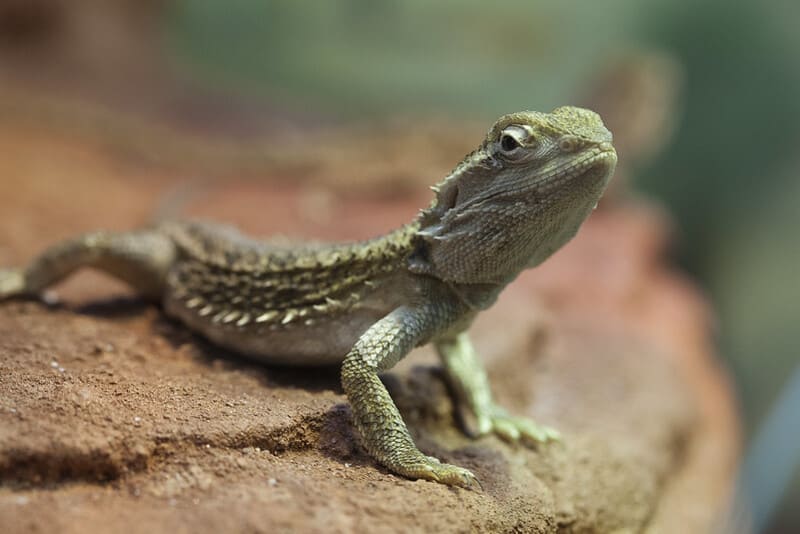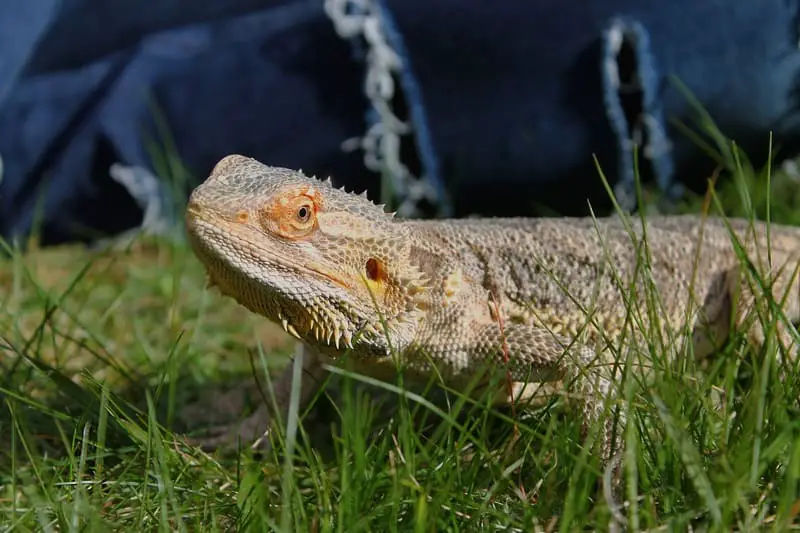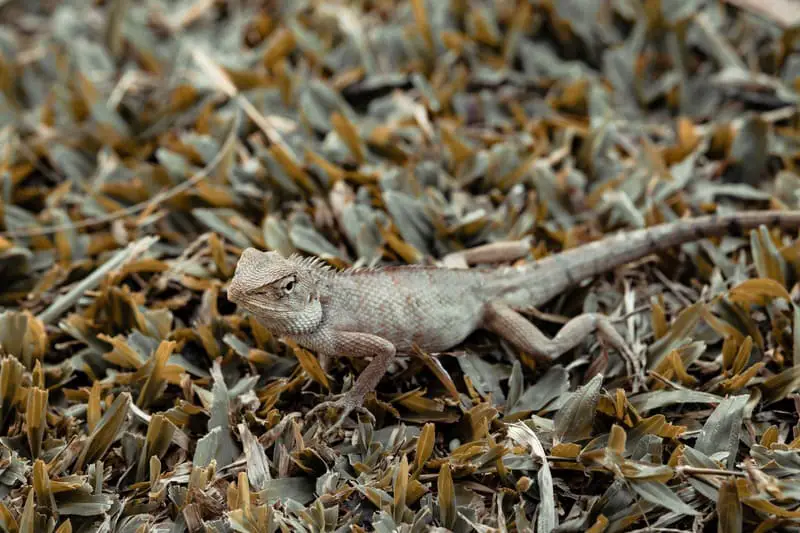Native to the arid and semi-arid regions of Australia, bearded dragons have adapted to survive in a variety of ecosystems. In the wild, bearded dragons are not at the top of the food chain and have their share of predators and threats. Understanding these predators is essential for appreciating the challenges faced by these reptiles in their natural habitat and for providing proper care and protection for captive bearded dragons. In this comprehensive exploration of the topic, we will delve into the world of bearded dragon predators, including both natural threats in the wild and potential dangers in captivity.

Bearded Dragon Predators in the Wild
In the Australian outback, bearded dragons have evolved to cope with a variety of threats from predators and environmental factors. Here are some of the most significant predators and dangers they face in their natural habitat:
1. Birds of Prey
Birds of prey are prominent predators of bearded dragons in the wild. These include various species of raptors such as wedge-tailed eagles, brown falcons, and whistling kites. Bearded dragons, especially young or small individuals, are vulnerable to being snatched from the ground or rocks by these aerial hunters. Birds of prey have excellent vision and can spot bearded dragons from high in the sky.
2. Snakes
Several species of snakes are known to prey on bearded dragons. Some of the most common snake predators include brown snakes, red-bellied black snakes, and carpet pythons. Snakes are stealthy hunters that can locate bearded dragons using their keen sense of smell and heat-sensing pits. They often ambush their prey by lurking in the vicinity of potential basking or hiding spots.
3. Monitor Lizards
Monitor lizards, which are large and agile predators, pose a threat to bearded dragons in their natural habitat. Goannas, a type of monitor lizard, are known to eat young bearded dragons. They have strong jaws and sharp claws that enable them to capture and consume their prey efficiently.
4. Mammals
Several types of mammals, including foxes, feral cats, and dingoes, are opportunistic predators that may prey on bearded dragons. These predators can significantly impact the populations of many native Australian species, including reptiles. Their presence poses a continuous threat to the survival of various wildlife, bearded dragons included.
5. Other Reptiles
Some smaller reptiles, such as skinks and smaller geckos, may prey on bearded dragon hatchlings or juveniles. Bearded dragons have a diverse diet that includes insects, so they can also become a source of food for other reptiles within their ecosystem.
6. Habitat and Environmental Factors
While not direct predators, habitat and environmental factors can also impact bearded dragons in the wild. Extreme weather conditions, such as heatwaves and droughts, can be detrimental to their survival. Prolonged droughts can lead to a scarcity of food and water, while excessive heat can cause heat stress or dehydration.
7. Humans and Urbanization
Unfortunately, humans and urbanization pose significant threats to bearded dragons in their natural habitat. Habitat destruction, road mortality, and illegal collection for the pet trade are challenges these reptiles face due to human activities.
Bearded Dragon Defense Mechanisms
Bearded dragons have developed several defense mechanisms to help them evade or deter predators:
1. Camouflage
Bearded dragons have excellent camouflage, which allows them to blend into their surroundings. Their coloration and skin patterns mimic the rocks and dry vegetation in their habitat. When they feel threatened, they may freeze in place, relying on their camouflage to avoid detection.
2. Puffing and Display
One of the most distinctive defense mechanisms of bearded dragons is their ability to puff out their “beard.” The spiky scales under their throat can be extended and darkened when they feel threatened. This display is often accompanied by hissing or agitated movements, making them appear larger and more intimidating to potential predators.
3. Running and Hiding
Bearded dragons are relatively fast runners and can quickly dart for cover when they sense danger. They seek refuge in rock crevices, burrows, or other hiding spots where predators have difficulty reaching them.
4. Tail Autotomy
Bearded dragons can shed their tails as a last resort to escape a predator’s grasp. This process, known as autotomy, allows the lizard to drop its tail, which may continue to wriggle and distract the predator while the bearded dragon escapes. The tail regenerates over time, but it is never as long or as vibrant as the original.
5. Basking and Thermoregulation
Bearded dragons are ectothermic, which means they rely on external heat sources to regulate their body temperature. Basking is a crucial part of their daily routine, allowing them to maintain their body temperature and remain alert. By finding the right balance of basking and hiding, they can remain thermally comfortable while avoiding overheating or dehydration, which may render them more vulnerable to predators.

Bearded Dragons as Prey in the Wild
In the complex ecosystem of the Australian outback, bearded dragons serve as both predator and prey. While they may fall victim to numerous predators, they are also effective insect hunters, contributing to the control of insect populations in their environment. Bearded dragons have adapted to cope with predation pressure, and their defense mechanisms, including camouflage and display behaviors, help deter potential threats.
Bearded dragons are an essential part of the food chain, and their presence in the ecosystem influences the populations of their prey, such as insects and smaller reptiles. Their role as both predator and prey plays a crucial part in maintaining the ecological balance of their habitat.
Predators of Captive Bearded Dragons
Captive bearded dragons also face potential predators and threats, albeit of a different nature, primarily arising from their living conditions and human interactions. While these threats may not be the same as those encountered in the wild, they are relevant to the well-being of bearded dragons in captivity.
1. Other Bearded Dragons
Bearded dragons are territorial and can exhibit aggressive behaviors, especially when they encounter unfamiliar conspecifics (members of the same species). In multi-bearded dragon enclosures, individuals may engage in territorial disputes, leading to stress, injuries, and even fatalities. It is crucial to provide adequate space and hiding spots to minimize aggression in a shared enclosure.
2. Incorrect Enclosure Mates
Housing bearded dragons with other reptile species, especially those that are not compatible, can result in injuries or fatalities. Different reptiles have varying habitat and temperature requirements, and introducing incompatible species can lead to conflict, stress, and health issues.
3. Inadequate Enclosure Design
Inappropriately designed enclosures can pose threats to bearded dragons in captivity. Inadequate heating, lighting, and hiding spots can lead to stress and discomfort. Furthermore, improperly secured enclosures may allow cats, dogs, or other household pets to interact with or harm captive bearded dragons.
4. Poor Handling
Improper handling by humans can cause stress and physical harm to bearded dragons. Handling should be done gently, with proper support and without excessive force. Rough or mishandling can result in injuries or psychological distress for the reptile.
5. Parasites and Diseases
Bearded dragons can contract parasites and diseases in captivity, which can significantly impact their health. Poor husbandry, overcrowding, and inadequate sanitation can contribute to the spread of illnesses. Proper care, hygiene, and regular veterinary check-ups are essential for preventing and treating health issues.
6. Stress-Inducing Factors
Stress can have detrimental effects on captive bearded dragons. Stressors may include overcrowding, insufficient hiding spots, inappropriate enclosure temperature and lighting, or frequent disturbances. Reducing stressors in their environment is crucial for their well-being.
7. Inadequate Nutrition
Inadequate or imbalanced diets can harm the health of bearded dragons. Captive bearded dragons require a diet that includes a variety of insects, vegetables, and greens to ensure they receive the essential nutrients they need. Proper nutrition is vital for their overall health and resistance to diseases.

Providing Protection for Captive Bearded Dragons
Ensuring the safety and well-being of captive bearded dragons is the responsibility of their owners. Here are some key steps you can take to protect your pet from potential threats in a captive setting:
1. Appropriate Housing
Provide an appropriately sized and well-designed enclosure that meets the specific needs of your bearded dragon. Ensure that the enclosure is secure, escape-proof, and equipped with the necessary heating and lighting.
2. Proper Handling
Handle your bearded dragon gently and with care. Avoid rough or stressful handling, and support their body to prevent injuries. Minimize excessive handling to reduce stress.
3. Health Monitoring
Regularly monitor your bearded dragon’s health and behavior. If you notice any signs of illness, injury, or stress, consult with a reptile veterinarian for a proper diagnosis and treatment.
4. Nutrition
Offer a balanced and varied diet that includes appropriate insects, vegetables, and greens. Ensure that your bearded dragon receives the essential vitamins and minerals required for their well-being.
5. Clean and Sanitary Conditions
Maintain a clean and hygienic enclosure. Remove waste, uneaten food, and shed skin regularly to prevent the buildup of bacteria and parasites. Provide clean water and sanitize food and water dishes as needed.
6. Single or Compatible Mates
If housing multiple bearded dragons together, ensure they are compatible and provide enough space and hiding spots to minimize aggression. Monitor their behavior to prevent injuries.
7. Avoid Mixing Reptile Species
Refrain from housing bearded dragons with other reptile species, as different reptiles have diverse care requirements and can pose risks to one another.
8. Safety from Household Pets
If you have other pets, such as cats or dogs, ensure that they cannot access your bearded dragon’s enclosure. Keep the reptile’s habitat secure and separate from areas accessible to other animals.
9. Stress Reduction
Minimize stress-inducing factors in the enclosure, such as overcrowding, inadequate hiding spots, or excessive disturbances. Create a calm and enriching environment that promotes your bearded dragon’s well-being.
By providing proper care and protection for your captive bearded dragon, you can ensure their safety and well-being, just as you would for any other pet.
Conclusion
Bearded dragons, both in the wild and in captivity, face various predators and threats. In their natural habitat, they contend with birds of prey, snakes, monitor lizards, mammals, and other reptiles. In captivity, their threats primarily arise from their living conditions and human interactions. Understanding these predators and threats is essential for appreciating the challenges that bearded dragons encounter and for providing them with the care and protection they need.
Whether you are a bearded dragon owner or an enthusiast of these remarkable reptiles, being informed about their potential predators and the steps to protect them is crucial. By providing proper care, maintaining a suitable environment, and being attentive to their health and behavior, you can ensure the safety and well-being of these beloved reptile companions.
